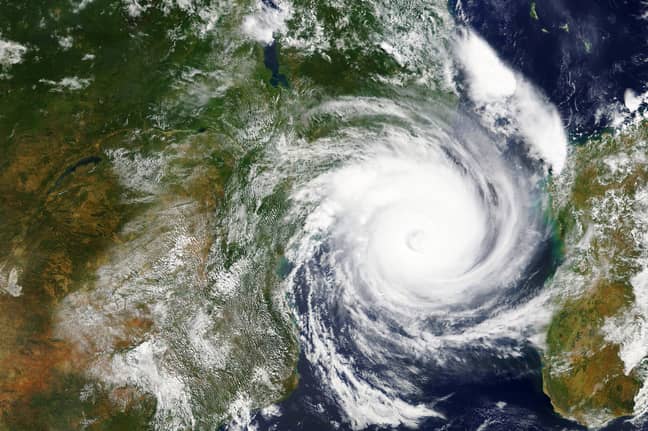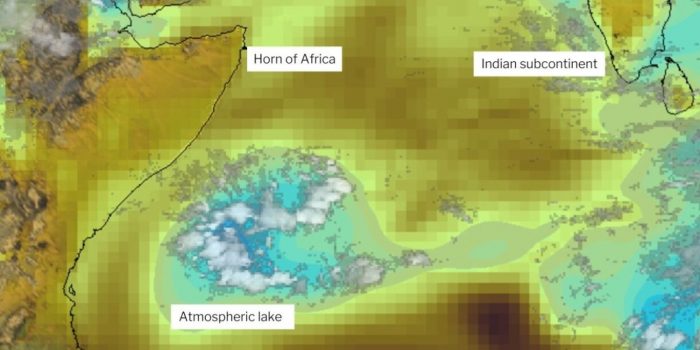There is a new type of storm discovered in the skies over the Indian Ocean. They are called “atmospheric lakes,” and are slow-moving pools of concentrated water vapor that last for days.
Brian Mapes and Wei-Ming Tsai are the atmospheric scientists that made the discovery while studying weather patterns over the Indian Ocean. The team particularly analyzed rain and water vapor patterns occurring on a day-to-day scale.
The new structures are related to atmospheric rivers. They comprise long, thin plumes of concentrated moisture that can stretch for thousands of kilometers. These fast-moving rivers can carry a huge amount of water, dumping it in a band of rain.

These lakes pinch off into an isolated, concentrated mass of water vapor. Afterward, they drift very slowly across the sky, in areas where the wind speed is around zero. According to the scientists, they hold enough water to form a puddle a few centimeters deep and about 1,000 km (620 miles) wide.
They have analyzed five years of satellite data of the Indian Ocean and identified 17 atmospheric lakes that lasted longer than six days. They were found in all seasons, and typically within 10 degrees of the equator. The researchers say that they can occur further from the equator as well, and they can take the form of tropical cyclones as well.

These lakes are created from the vapor streams flowing in from the Indo-Pacific region, then drift slowly to the west until they reach the eastern coast of Africa.
“It’s a place that’s dry on average, so when these [atmospheric lakes] happen, they’re surely very consequential,” says Mapes. “I look forward to learning more local knowledge about them, in this area with a venerable and fascinating nautical history where observant sailors coined the word monsoon for wind patterns, and surely noticed these occasional rainstorms, too.”
The research was presented at AGU’s Fall Meeting 2021 this week.


